Electric Linear Actuators in Food & Beverage Equipment Applications
Selecting the ideal linear motion system to optimize processes and ROI.
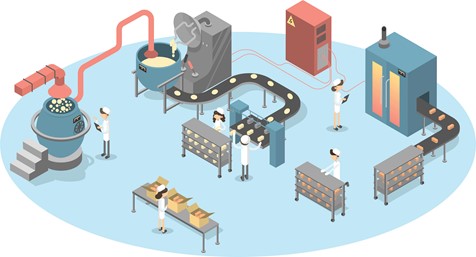
Summary
This paper reviews the fundamentals of applying electric linear actuators to Food & Beverage applications. The primary focus involves automation applications that utilize electric linear actuators driven by DC motors. It also tries to show three different types of linear motion solutions that cover a broad range of complexity (from simple to complex) making it easier to choose a solution that is a best fit for the application and budget.
Overview - A rapidly evolving industry with increased demands
Food Production is a key market sector that will receive significantly more focus on a global perspective as we emerge from our current situation. More efficient farming, harvesting, and production are critical to keeping stocked shelves, refrigerators, and freezers in our supermarkets going forward.
As agriculture and food equipment manufacturers prepare for this upcoming situation by upgrading and re-designing their machines, it is important to consider the most efficient and environmentally safe linear motion solution possible. We will cover this in more detail throughout this article.
Some of the most common food & beverage industry sectors that initially come to mind include meat, poultry, dairy, beverage, bakery operations. In addition, companies within the agricultural segment are also highly applicable. This list includes organizations that operate ranches, greenhouses, farms, and orchards.
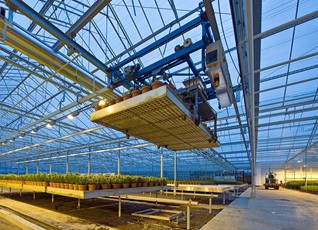
There are many food and beverage trends over the next several years. However, in the case, we will focus on the ones that specifically apply to the manufacturers and end users of equipment used for food processing (with an emphasis on automation).
One of the primary industry drivers going forward will be innovation. This will require food processing equipment that can readily adapt to new products being introduced at a given facility (and being able to process multiple versions on one production line).
Another driver will be increased automation. This will ultimately facilitate increased process control and efficiency.
Lastly, there are ever-increasing regulatory and environmental regulations that must be met in many of the food & beverage market segments. This also includes worker safety and ergonomics.
Applications - An endless variety of situations that require linear actuation
Here are some details on some of the most common food & beverage process operations found in many production facilities.
Filling
Filling applications typically require faster machine operation in hygienic environments. In addition, equipment must provide highly accurate fill control while adapting to varying bottle heights to reduce change-over time. This can include both volumetric and piston operation. Bottles, cups, bags, and containers are some common examples of items to be filled.
Cutting & Slicing, Chopping, Mixing, Extruding
These types of operations are fundamental for food processing equipment operations. In addition, they require a high degree of precision, flexibility, and safety. Hygienic factors play an increased role here as the equipment is in much closer proximity to the food or beverage that is being processed. Additional types of processing operations include de-boning, meat processing, and benders.
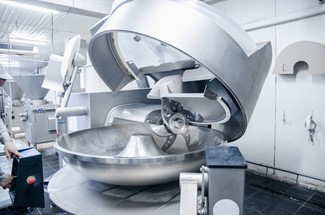
Conveyors, Aligning, Packing, Sorting
Various linear actuators are routinely used to properly adjust conveyors and aligning and sorting positioning devices. These can include different environmental conditions (indoor, outdoor, heat, cold, messy).
The processing equipment on the conveyor system may require adjustment (such as a heavy heating element). Or, the products themselves may require re-positioning as they travel down the conveyor system (such as bottled water). Some typical specialized operations include Conveyors, Ovens, Separators, Handling, Palletizing, Pick and Place, and packaging.
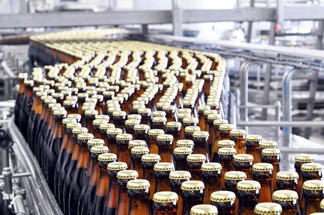
Open & Close Lids, Stacking, Emptying, Pressing
Linear actuators are ideal for opening and closing lids of any size safely, hygienically, and with easy washdown clean-up. Many of these applications require multiple lanes to independently index lines of food products for optimal throughput and accuracy while maintaining product integrity, quality, and safety. Other functions that require linear motion include doors, hatches, safety devices, and emptying containers.
Hygienic Design Requirements - Understanding the regulatory basics
Standard design guidelines have been developed to ensure that food processing machinery can be properly cleaned and sanitized after every use. The pertinent governing bodies include 3-A Dairy and USDA.
Overview
The IP (Ingress Protection) Rating system was originally established by the IEC 60529 standard. It was recently determined the prior highest rating of IP68 was still not sufficient for enclosures that were regularly exposed to high pressure or high temperature environments such as those seen in wash down applications. Therefore, a special IP rating of IP69K was created; originating from the German DIN 40050-9 standard (for road vehicles exposed to routine intensive cleaning).
The requirements and testing to meet the IP69K rating regarding waterproofing exceed those seen with the NEMA 4X rating. However, the new standard has translated well into the Food & Beverage industry where similar demanding wash down is often required (and hygienic classification).
In addition to high pressure and high temperature, certain applications also require the use of cleaning agents to achieve specific hygienic conditions. Typically, IP69K rated linear actuators are specially designed to meet these stringent new requirements.
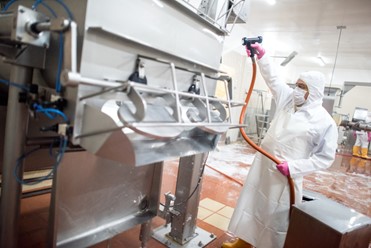
Key Hygienic Requirements
These criteria are critical for electronic linear actuators to pass the rigorous testing while performing with total reliability and safety in the field.
General Requirements Include
- Should be durable and easy to clean
- Must seal tightly to prevent contaminants from mixing with product (grease, etc…)
- Exterior components constructed using 316 stainless steel (surface roughness < RA32)
- Non-steel components made using FDA approved materials
- Resistant to cleaning chemicals
- No sharp corners, crevasses, or unsealed metal areas to trap food particles
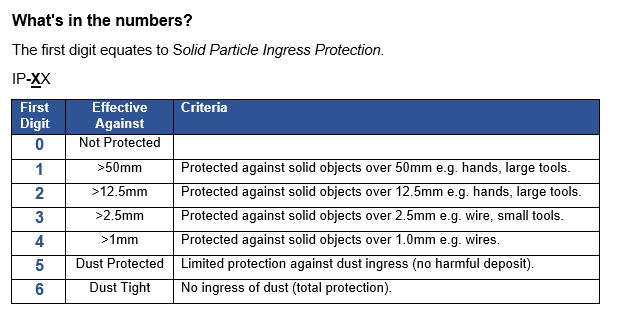
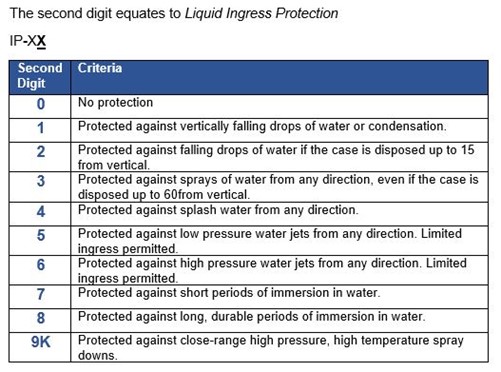
IP69K Food Grade Electric Linear Actuator
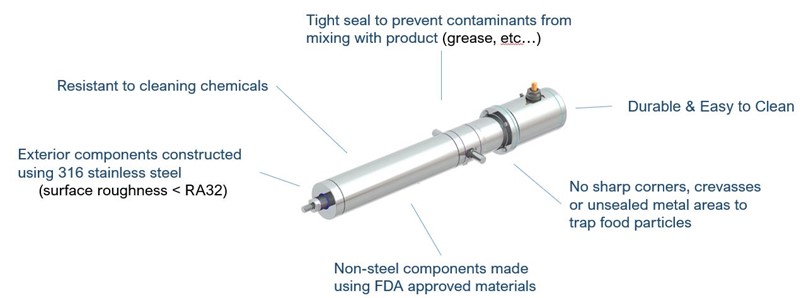
Benefits of Electric Linear Actuators - An ideal fit for Food & Beverage
- No Toxic and Slippery Fluid Spills- Electric linear actuators do not utilize hoses, pumps, or toxic fluids. We explore some of the advantages they have over hydraulic systems in further detail below. This makes them very Eco-Friendly as there is no risk of harming the environment. This is especially critical where food harvesting and processing is concerned.
- Improved Efficiency - These devices are also Eco-Friendly in another way. They require less power consumption and ultimately save energy. The screw technology is >90% efficient.
- Compact Design - Because they do not require hoses or pumps, electric linear actuator systems consume less space (maximizing your equipment footprint).
- Easy Installation - Just bolt on the electric actuator and connect power.
- Accurate and Precise Control - These actuators are safer because they can hold load in place if the power fails. They also have programmable speeds for increased accuracy and smoother operation. In addition, programmable stop positions on these actuators significantly reduce wear while dramatically increasing service life. Electric actuators can stop at any position along their length. Feedback sensing options provide sensor feedback on the motion and force applied to the actuator. This allows greater control over the motion and positioning accuracy.
- Lower Cost of Ownership - Electric actuators provide trouble free operation without maintenance. This ultimately results in a significant cost savings over time.
- Faster Acceleration - More rapid acceleration coupled with smooth, non-stick movement also contribute to better overall performance.
Design Considerations - Configuring for the application
Consider the big picture first
When engineers are designing an electro-mechanical system that utilizes electric linear actuators versus other technologies, there can be multiple ways to solve one application. All variations differ in accuracy, performance, space (footprint), total cost of ownership, among many other factors.
Before deciding on the type of electric linear actuator to be used for a given project, it is very important to consider the big picture of your operations and objectives (and not just focus on product specifications alone). Doing this will ultimately maximize ROI on your equipment investment while speeding up your time to market. Some of these “big picture” factors include budget, maintainability, safety, environment, and flexibility.
Linear Actuator Drive Types (Internal)
Common linear actuator drive types include screw and belt.
Screw Drive Linear Actuator
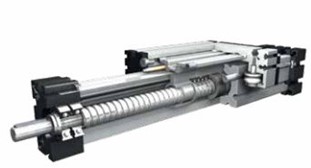
Acme Screw
The acme screw thread, sometimes referred to as the trapezoidal thread, is used for lead screws. They are often needed for large loads, or in demanding environments.
The acme thread form has been around for over a century, replacing square thread screws which had straight-sided flanks and were difficult to manufacture.
Industry leaders have developed several unique thread forms, such as stub acme forms and 40 degree included angle, which allow them to provide a variety of diameter and lead combinations.
Acme Screw Drive Advantages
- Low Noise
- Ideal for Vertical and Light Loads
- Resistance to Back-Driving
- Self-locking (no need for brakes)
- Lower Cost
- Environments with Vibration
- High static loads
Ball Screw
Ball screw drive is typically used for loads requiring a greater amount of efficiency. A ball screw assembly is a device comprised of a nut, screw, and reciprocating ball bearings. The bearings provide the thread engagement between the nut and screw.
Ball screws offer a highly efficient means for converting rotary motion to linear motion. A ball screw is an improvement over an acme screw just as an anti-friction ball bearing is an improvement over a plain bushing. A part of what makes ball screws versatile in so many industries is their ability to carry remarkably heavy loads at fast, efficient speeds.
Ball Screw Drive Advantages
- Improves speed, force, and duty cycle
- Longer, predictable life cycle (low friction)
- Requires less motor power
- Greater accuracy
- Higher loads and duty cycles
Belt Drive Linear Actuator
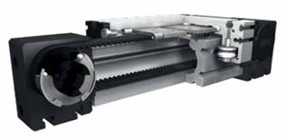
Belt Driven Modular Actuators have a distinct advantage due to their ability to be manufactured in virtually any length. They include either an external, trapped, or internal belt arraignments. The Belts are typically made of a high-tension steel material that only requires a single adjustment after initial use.
Belt tension can be readjusted by a simple screw adjustment device in the carriage. Belt driven modular actuators can also be used for symmetrical motion of two or more linear units running parallel.
Belt driven actuators are often available with special ratings for clean room and explosion proof environments.
Loads
All anticipated loads should be within the rated capacity of the linear actuator. Loads on the actuator cylinder in most applications include static loads, dynamic or moving loads, cutting or other reaction forces and acceleration/deceleration loads. This likewise includes load variation.
Key Terms
- Maximum Load - The maximum thrust load, including shock, that can be applied to the actuator without damaging the assembly.
- Dynamic Capacity - The maximum allowable thrust load based on horsepower, thrust bearing, and screw limitation.
- Tension Load - A tension load is the load that tends to stretch the screw. Good materials should be able to retain stiffness and withstand stretching.
- Compression Load - A compression load is the load that tends to squeeze or stretch the screw. Good materials should be able to withstand buckling and maintain straight columns.
Travel and Speed
How long does the electric actuator need to travel in order accomplish the given task? How fast does it need to move up and down the desired length? Parameters include travel length, travel orientation (Vertical, Horizontal, etc…), and travel rate speed.
Expected Life
One of the benefits of using ball screw-style linear actuators is the ability to predict the theoretical life of the ball screw. The life of a ball nut used in a ball screw-style jacks can be easily calculated by using a standard formula. For manufacturers wishing to extend the life of their screws, it can be beneficial to order a larger size linear actuator than normally required, extending the life of the screw.
Duty Cycle
Duty cycle is the ratio of run time to total cycle time. Some of the electrical energy input to an electric cylinder is converted into heat. The duty cycle is limited by the ability of the electric cylinder to dissipate this heat. This is an important consideration because an increase in temperature can affect the properties of some components resulting in accelerated wear damage and possible unexpected failure.
Environment
Consider the type of machine, function, load guidance system and operating environment. This includes:
- Shock, impact loading, vibration
- Temperature extremes
- Corrosion (Including washdown cleaners)
- Dirt/Washdown (or other extreme operating conditions).
- Indoor/Outdoor
- Facilities Space (Footprint)
Since linear actuators often work in environments full of dirt and debris, manufacturers should take multiple precautions to keep out contamination and extend life. Ask your linear motion provider for product accessories that are available for added protection..
DC Motor Types
- Stepper Motors - DC motors that move in discrete steps. They utilize multiple sets of coils arranged in groups or “phases“. The motor will rotate or "step" as each phase is sequentially triggered. Stepper motors are typically used when high precision in movement is required.
- DC Motors - The output shaft spins when a DC voltage is applied across the motor terminals. Motor shaft speed is adjusted based on the magnitude of this voltage.
- Servo Motors - Consist of a DC motor, gear system, and control unit. The control unit rotates the gear shaft with a specific angle based on PWN signals sent from the robot's computer. There both analog servos and digital servo types. Smart digital servos are now available in the market that provide position, speed, torque, and temperature feedback.
- DC Gearbox - Adding a gearbox to a DC motor increases the shaft torque while reducing the motor speed. They consist of a DC motor attached with a gear system with an output shaft.
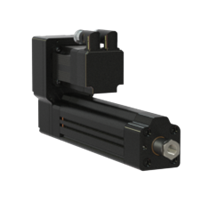 Linear Actuator with Motor
Linear Actuator with Motor 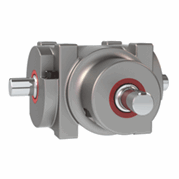 Gearbox
Gearbox
Applying the Different Electric Linear Actuator Devices
In this section we will review some of the different types of electric linear actuators and how they best fit into different food & beverage applications.
Modular Linear Actuators - Great for single axis and XYZ positioning duties
Modular linear actuators can be used as a single axis solution or assembled for a multitude of gantry XY and XYZ positioning duties including dispensing, pick and place and inspection. These linear actuators easily integrate into users’ existing control networks.
They are highly modular in design. This allows them to easily adapt to ongoing workspace and product mix evolution. Some models are also ideally suited to perform in harsh environments as (wet/dusty/dirty). Corrosion resistant models can be used in chemically adverse environments.
Typical Operations
- Part Transfer
- XYZ Pick and Place
- Step and Scan
- Simultaneous Multi-Axis
- Coordinated Motion
- High Speed/Precision Positioning
- Conveyor Automation and Transport
- Handling, Packing, Palletizing
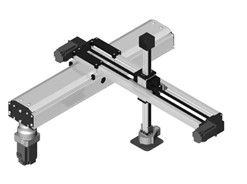
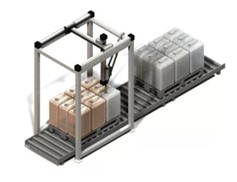
Advantages
- Low Noise and Low Maintenance
- Long Travelling Distances (Belt drive)
- Fast Operating Speeds
- Space Saving (Compact design)
- Long Service Life and High Load Capacity
- Low Weight
- Maximum Precision
- Unlimited Flexibility (Highly configurable)
Application Example - Bottled water palletizer
To meet the demands of a variety of consumers and retailers, bottled water packaging must accommodate a wide variety of different shapes and sizes (packaging configurations). As this technology has progressed, much thinner plastic bottles are now produced, A wide variety of shapes created a need for packaging machines to accept a wider range of sizes (while not damaging the new thinner bottles).
Application Concerns
Conveyor deflectors were previously used, but this has been shown to damage the product due to the inertia of the product moving along the conveyor. Articulating robot arms are commonly used, but due to their large structural mass, they have limits to how fast they can process product into the correct position.
A three-axis gantry was able to realize a 20% increase in production output over the articulating robot arm without damaging the product in any way. The belt driven actuators allow the gantry to create two axis of motion in a single belt driven actuator, a vertical Z move as well as a rotational theta move. With planetary gearboxes, servo motors and drives the gantry system allowed the end user to modify the pallet stacking sequence without mechanical and software changes.
Benefits
- Seamless Changeover (Downtime reduction)
- Gentile, Quick, and Precise Motion
- Cost Effective and Complete Mechatronic Solution (Increased customer value)
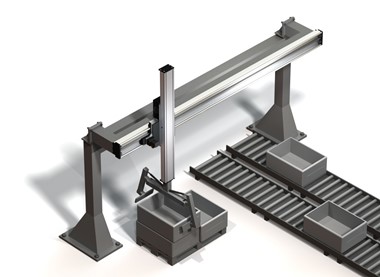 Basic Palletizing Operation
Basic Palletizing Operation
Programmable Linear Actuator - When accurate positioning and control is a must.
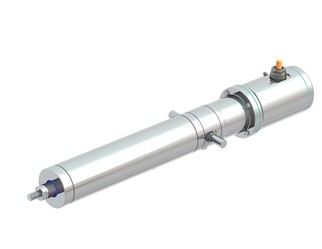
Programmable Linear Actuators are ruggedly designed for continuous duty, larger loads, long service life with higher speeds. They can incorporate a direct drive or toothed belt drive for high mechanical efficiency that allows for a quiet running performance. Programmable actuators are most often supplied with either a ball screw or acme screw, and either a servo or stepper drive system.
Typically, these types of electric linear actuators are supplied as a complete solution including motor, drive, controller, and power supply. They are ideal for operations that require a high degree of precision, accuracy, and control. In addition, they adapt easily to existing electronic and software platforms.
Typical Performance Characteristics
- Rated for continuous duty (Servo driven ball screws).
- High mechanical efficiency.
- Excellent Repeatability and accuracy (tightly controlled)
- Parallel or inline motor configuration
- Wide variety of motor options
- Available with IP69K rating
Application Example - Large dough press
The manufacturer of an automated dough press was looking for a way to save money, but not affect the quality of the product. The press was using a linkage mechanism and expensive gear box attached to two 18” discs. In this case converting to an electric programmable actuator (utilizing a ball screw drive) provided a more cost-effective solution. With a ball screw actuator, a smaller motor could be used allowing them to initial investment capital and energy costs (while improving the accuracy and performance of the equipment and process).
Application Example - Accurately filling containers on a conveyor
Programmable actuators can be utilized to accurately dispense food product (cake batter, etc…) into containers moving down a conveyor line. The process works like a hypodermic needle. The viscous or semi-viscous food product is stored in hoppers above the conveyor line. One linear actuator retracts and pulls product from the hopper into a valve system. The product is then routed via various lines to points along the conveyor. Another linear actuator then dispenses a very precise amount of product into the containers. This operation requires a high degree of control and accuracy.
Screw Jacks and Electric Cylinders - Ideal for demanding environments
Screw jacks and electric cylinders have very similar internal construction and they can both be utilized in a similar manner. Both can be used individually or in multiple arrangements.
An alloy steel worm which drives a high strength bronze worm gear (drive sleeve). The worm shaft is supported on anti-friction tapered roller bearings with external seals provided to prevent loss of lubrication. The drive sleeve is supported on anti-friction tapered roller or ball thrust bearings. Rotation of the drive sleeve causes the lifting screw to translate or rotate, depending upon jack or electric cylinder configuration.
Electric Cylinders are intended for use in industrial (and outdoor) environments and utilize precision-ground hard chrome-plated actuator tubes with industrial enamel or epoxy paint on exterior surfaces.
There have been many highly interesting linear motion technical innovations designed to serve the food segment in recent years. However, many of the emerging food applications are still perfect for the venerable screw jack. It's simple yet effective design is timeless and it is a true workhorse for food applications.
Popular Arrangements for Food & Beverage Applications
In the food sector, screw jack systems are typically deployed in three common and versatile arrangements. Let's talk about a few of these in more detail.
“U” Arrangement
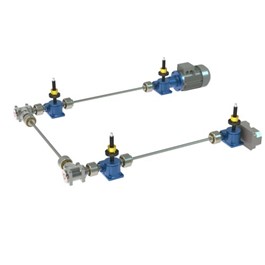
Application Example - Controlling oven heating element
A leading baked goods manufacturer is developing a new product line that must be pass closer to the top heating element of the conveyor oven. Previously, the top heating element of the oven was fixed and could not move. The new product must be positioned up to 14 inches closer (and be fully adjustable to accommodate the other product versions).
A 10-ton jack was selected for the mounting condition to fulfill the safety requirements of the application. This application’s infrequent cycles makes an ACME screw jack the best fit.
Specifications included a single 5-Horsepower motor for full travel in 36 seconds, food-grade grease, compression load and a double safety factor.
Upright rotating jacks were easily retrofitted to the existing oven with minimal modifications (They can be fully loaded in both the retracted and extended positions).
“T” Arrangement
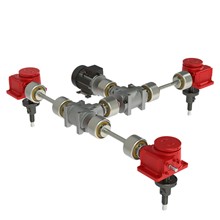
Application Example - Positioning large mixer
A manufacturer needs to periodically raise and lower a large cylindrical mixer 8 inches during the mixing cycle to facilitate product testing. The 1,700-pound cylinder is mounted on a movable cart, allowing for the final product to be re-positioned to a separate dispensing station.
The T arrangement offers a repeatability and reliability that gives the manufacturer assurance their production will not be compromised by ensuring the load is lifted uniformly and safely. For this configuration, a ball screw jack is used to minimize the size of the motor drive. Based on the mounting frame, the inverted rotating configurations will be used. Specifications included a single motor with a 12:1 gear ratio and the capability to travel 8 inches in five seconds.
“H” Arrangement
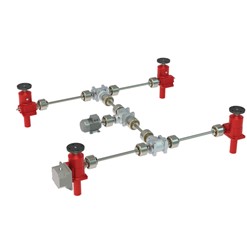
Application Example - Controlling a material lift
A manufacturer of steel frames for the commercial dairy industry is building a material lift which contains a stack of prefabricated frames. The material lift will index up 1 inch every 2 seconds as each frame is removed by an automated grip from the top of the stack. Complete cycle time is 10 minutes running 6 hours per day, 5 days a week. When fully loaded, the frames hold a total weight of 16,800 pounds, but when the load is fully extended, the weight is less than 5,000 pounds.
The design calls for a four-jack arrangement lifting from underneath the lifting stage, driven by a single motor. The frequency of these cycles and suggested design life makes the use of a ball screw jack the best option for this application. Using upright translating jacks allows the jack system to be located under the material lift without creating an obstruction.